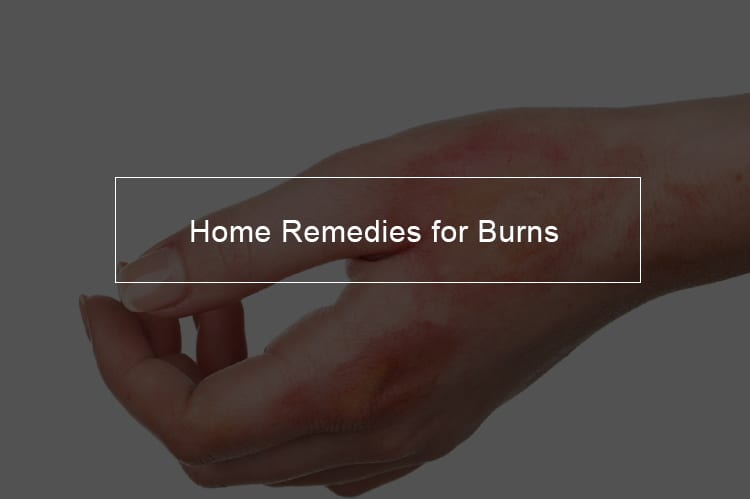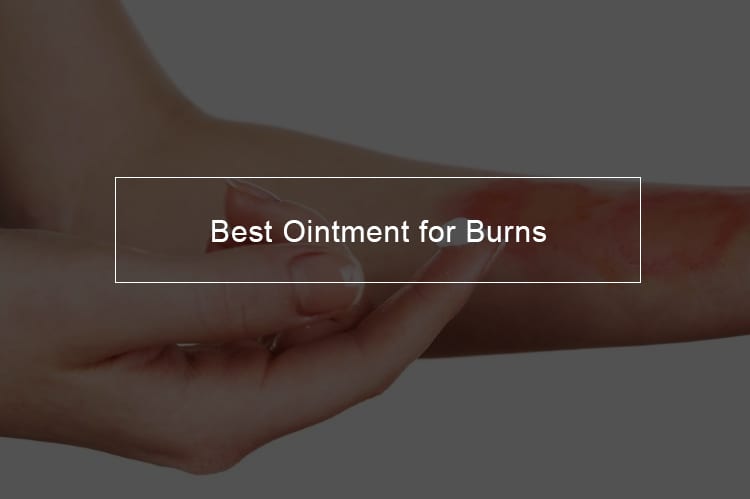
The determinant of whether a burn can be treated at home or whether it requires medical attention is the degree of the burn. The degree denotes how severe a burn is. Knowing how severe a burn is, what home remedies to use and what to keep off is important when it comes to burns. We will tackle all these in an effort to treat that minor burn at home or avoid any complications with the major ones.
How severe is the burn?
Categories of burns
There are four categories based on how severe burns are.
First degree burns
These are the least severe because they only damage the outermost layer of the skin.
Signs of first-degree burns
You can tell the first-degree burn by the characteristics below:
- tenderness or pain
- redness
- swelling
- peeling when the burn starts to heal
Second-degree burns
This is not that severe. It is worse than the first degree as it affects deeper layers of the skin.
Signs of second-degree burns
You can tell the second-degree burn by the characteristics below:
- extreme redness
- formation of a burn blister
- very painful or sore skin
Third-degree burns
This qualifies as an emergency. This burn is severe as it affects all the layers of the skin.
Symptoms of third-degree burn
- char
- white and waxy skin
- raised, leathery texture
- dark brown color
There are also burns resulting from electric shock. These to should not be treated at home. Seek medical attention because the risk is very high.
Fourth-degree burns
This category is the most severe. The damage is deep and reaches the bones and joints.
First and second-degree burns can safely be treated at home without any complications. These categories of burns will heal with minimal intervention. In fact, first-degree burns can heal within ten days. And it takes about 20 days for second-degree burns to heal. During healing, there may be a risk of infection. Watch out for that and contact your doctor if you see any signs.
What is the best treatment for burns?
The best home remedies for burns
Home remedies to treat burns are many. Some work perfectly, some you should use with caution as evidence that backs their efficiency is minimal, and other remedies you should stay away from altogether. They do not heal burns at all; in fact, they make the burn worse. Home remedies for burn should only be used on first and second-degree burns. The other two severe types need immediate medical attention.
Run cool water on the burn
First-degree and second-degree burns can be soothed with cool water. The water can also prevent additional injury from the burn.
Relieve the pain with a cool compress
This is simply a wet piece of cloth kept on top of the burn. The compress will do well to relieve the pain and swelling. Apply it on the intervals of 5 to 15 minutes. Remember it is a cool compress, not a cold compress, make sure the water is not extremely cold as it can further irritate the burn. Allowing cool water to run on the burn for 20 minutes will not only cool the skin but also relieve the pain and prevent the burn from getting deeper and affecting other layers of the skin.
Properly clean the burn
Cleaning the burn with a gentle antibacterial soap is essential. This will prevent infection. An infected burn can be a complication and will require medical care.
Use some antibiotics on your burn
Antibiotic ointments and creams can be used on burns with open blisters. These ointments help prevent infection in the open wound and also accelerates the healing process.
Some burns may need bandages
Burns that are in areas that can easily get dirt or rub with other parts need to be bandaged. This will reduce the risk of a fracture and hence infection. The same applies to blisters that are oozing. It is important not to ties the bandage too tight. And also, the stick part of the bandage should not touch the actual wound. In most cases, however, the minor burns and burn blisters do not require a bandage.
Aloe vera has the potential of treating burns
A lot of products and creams meant for burns have aloe vera as part of their ingredients. This is because of its antibacterial, pro circulation, and anti-inflammatory properties. Pure aloe vera will stop the pain, swelling, and inflammation. It will also play a part in promoting the growth and repair of the skin.
Relieve the pain with some over-the-counter medications
Getting burned is a painful affair, whatever the degree. All through the healing process, the burn can be a great source of discomfort. Take some pain medication that will reduce the swelling and relieve pain. Try ibuprofen which works as an anti-inflammatory medication and a pain reliever.
Do not pop burn blisters
Popping away those fluid-filled sacks resulting from burns can be very tempting. This will, however, lead to an infection, especially if the person popping it is not a doctor. You can let the burn blister be or visit a pro.
Keep the burn shaded from direct sunlight
Try to avoid the sun when healing from a burn. This will prevent the risk of worsening the burn and also reduce the pain. If you cannot stay away from the sun altogether, wear loose clothes that cover the area.
Does honey help burns?
There are honey bandages that prevent infection by sterilizing a burn. The same also relieves the pain associated with burns by soothing the skin. All this is possible because of the anti-inflammatory and antibacterial characteristics of honey.
Can vinegar help with a burn?
The acetic acid found in vinegar can relieve pain, inflammation, and itchiness from a burn. It will also protect the burn from infection as it has astringent and antiseptic properties. It is a component of aspirin. Alternatively, you can make a vinegar compress. This will draw out the heat reducing the pain in the burn.
Vanilla extracts for minor burns
There are some recommendations that suggest using vanilla extracts to relieve the pain. The idea is that the evaporating alcohol in vanilla will soothe the burn and cool it. This will reduce the pain. Simply dab some vanilla on the would using a cotton ball.
Using black tea bags to treat a burn
The tannic acid in black tea can be useful in extracting heat from a burn thereby cooling it off and relieving pain. Simply place a couple of wet black tea bags on the wound and let them draw the heat.
Using oats to treat a burn
When it comes to itchy burns, using oats can be very beneficial. Oats will soothe the skin and help reduce inflammation. Considering the negative effects of scratching a burn, you should try this. Soak in an oat bath for 20 minutes. To prepare the oat bath, mix some oats in the bath water. You can add some baking soda as well; it will help with the inflammation. For smaller irritations, soak the area in a bowl of similar mixture. After you are done, do not dry with a towel, it will remove the remaining thin layer of oats. Let it dry on its own.
Using milk to treat a burn
Milk can potentially soothe burn wounds. The proteins and fat in milk will promote healing and relieve the pain. Simply deep the burn in milk and leave it for 15 minutes. Whole milk, full-fat, and yogurt can all work the same way.
Using vitamin C and vitamin E to treat a burn
Vitamin C plays a part in the synthesis of collagen thereby promoting the healing of wounds. Vitamin E, on the other hand, is an antioxidant, which means it can as well help with skin repair. Eating foods rich in such vitamins will help speed up the healing of burns.
What is the best ointment for burns?

Using essential oils to treat burn wounds at home
Using essential oils for minor burns is safe, that is if you use the oils the right way. You should not use pure essential oils that are not diluted with carrier oils on your burn wound. This can worsen the wound by increasing the inflammation and the pain.
Does tea tree oil help burns?
Tea tree oil is among the best essential oils for burns. This infection-fighting oil is also anti-inflammatory and therefore a great remedy for burns.
Lavender oil for burns
When it comes to healing burns, lavender oil does the trick. The oil will reduce your pain, reduce the inflammation, and potentially prevent infections. Moreover, lavender can speed up the recovery process of the wound.
Peppermint for burns
When it comes to relieving pain, peppermint, and other mint species have proved to be very effective. This is why this why peppermint is good at dealing with burns. The oil will not only get rid of the pain but also reduce inflammation.
Chamomile oil for burns
Chamomile is a popular choice for dealing with wounds and healing the skin. You will find this ingredient in a lot of the skin products and lotions around. Chamomile has skin-rejuvenating, moisturizing, and emollient properties, and it is, for this reason, it is used in healing minor burns.
Eucalyptus oil for burns
This common topical essential oil is used for healing burn wounds. Eucalyptus is also an astringent, antimicrobial, and anti-inflammatory and therefore can prevent the burn wound from infections. Apart from burns, research says that eucalyptus can also be used for insect bites, cuts, and lice.
Juniper oil for burns
Various studies have backed the effectiveness of juniper in healing burn wounds. The oil has thujone, which is believed to the reason behind its healing capabilities. Thujone can help in soothing inflammation, prevent infections, and heal the wound. This compound can also reduce scars that result from burn wounds.
Geranium oil for burns
Essential oils from geranium are known to be effective in healing minor burn wounds. The oil is antibacterial, anti-inflammatory, and also anti-cancer. Moreover, it can be used as a sedative and hence very effective in pain relief. However, geranium can cause some skin irritation.
Pine oils for burns
Pinene, a compound found in pine, is very useful in killing bacteria, reducing inflammation, and reducing scarring. Moreover, it is believed that pine tree compounds can be wound healers. For this reason, essential oils from pine are used for burns.
Sage for burns
The use of sage and its species for healing burns can be backed up by many studies. It can reduce the chances of infection and treat a burn wound, all thanks to its antibacterial properties. The most common variety is clary sage.
When to see a doctor regarding a burn?
Knowing the difference between the categories of burns is key when determining whether you can treat it at home or you need to see a professional.
Seek immediate attention or call 911 if the following happens:
- If you are burnt in a wide area, more than 3 inches.
- if the burn wound is smelly and very painful.
- if you are burnt in the face, buttocks, groin, or hands.
- if you consider the burn third-degree or higher.
- if you get high temperatures.
- if you have stayed more than five years without a tetanus shot.
Do not attempt to treat a third-degree burn at home. This can lead to the following risks:
- risk of infection
- massive blood loss
- shock
Conclusion on treating a burn at home
First-degree burns and second-degree burns are bad but can be safely treated at home. Within a few weeks, the victim will make a full recovery. Be careful on the home remedy you use, some are just a folk tale and do not work. They can even worsen the burn. With the right remedy and good care, the burn will heal properly. As long as the wound does not show signs of infections you are good. If it does, take a doctors appointment.




